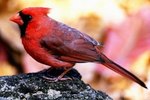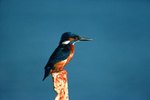If you intend to keep a pair of swans, three things are necessary -- proper habitat, state permits and a lot of money. It's not that swans cost that much to keep per se, but purchasing a pair from commercial hatcheries or breeders will set you back at least a few thousand dollars. You may have to construct a suitable habitat, and that runs into serious cash. On the plus side, swans may grace your property for up to 20 years.
Warnings
In many states, private swan-keeping isn't allowed. Other states may allow swan-keeping but not breeding. It's important to know the law in your state, and the information is available from your state's Department of Natural Resources or its equivalent. Laws regarding swan-keeping change frequently, so keep abreast of federal and state regulations.
Swan Ponds and Islands
For best results, keep your swans on a private pond without public access, and where they can't wander onto adjacent properties. Carolina Waterfowl Rescue recommends installing an "island" on your lake or pond for the swans to rest, if no such natural piece of land exists. Build such islands at least 50 feet from the shoreline and allow a minimum of 100 square feet for the site. The surface must stand at least 2 feet above the high water line. For multiple pairs of wild swans, two islands are necessary, as the birds will use one for nesting and the other for loafing. If you have only one domestic pair, the same island can serve both purposes.
Their New Home
When introducing your pair to their new home, keep them in a fenced-off area with water access for the first six weeks. It takes them that long to acclimate. Breeding pairs are territorial, and males will fight, but this isn't an issue if you keep one pair. Don't worry about your swans flying off -- if you purchased them from a commercial hatchery, a wing has been clipped, or pinioned, so they can't fly. Do not introduce a pair of domestic swans into an area where wild swans nest.
Tips
Swans are strong and can become aggressive. You must always remain the "top bird." If a swan appears poised to attack, draw yourself up to stand as tall as possible and wave your arms. Don't turn your back on the swan but back away from the potential threat.
Feeding Swans
Swans are grazers who consume land and water-based plants. They will destroy nearby landscaping in their food quest, and you must make sure that none of the landscaped plantings are toxic. If swans are limited to your property, you'll need to supplement their feeding. Provide them with fresh greens, such as spinach or kale, along with a commercial feed designed for waterfowl. You'll soon learn how much to feed, as swans only eat a certain amount in their morning and evening meal. Place food in the water, except when the lake or pond is frozen.
Breeding and Cygnets
If you have a breeding pair, they may start producing cygnets -- baby swans -- at about age 3. While you want the cygnets to get used to you, which makes later veterinary and any other necessary handling much easier, you don't want them to actually imprint on you. Raising cygnets is the job of the cob and the pen, the male and the female. Swans are not people, and allowing a cygnet to imprint on you and believe it is a person becomes quite dangerous as this powerful bird matures. That doesn't mean the cygnet can't learn simple things like his name and coming when called. Avoid hand-feeding the babies. It's cute when they're young. It can cause injury once they're grown.
Disease and Veterinary Care
Find an avian veterinarian experienced in swan care before you need her services. Swans are prone to various diseases common to waterfowl and non-waterfowl species. Botulism, which is generally fatal, may occur from consuming bacteria producing the toxin, which thrive in the oxygen-free environment at the bottom of ponds. Have the means to transport a sick or injured swan on hand before any emergency. That includes large cages or slings to carry the bird.
Writer Bio
Jane Meggitt has been a writer for more than 20 years. In addition to reporting for a major newspaper chain, she has been published in "Horse News," "Suburban Classic," "Hoof Beats," "Equine Journal" and other publications. She has a Bachelor of Arts in English from New York University and an Associate of Arts from the American Academy of Dramatics Arts, New York City.





